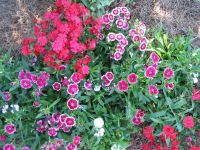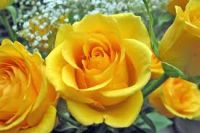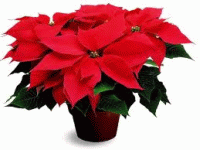
January, Janvier or Enero, no matter how you say it, this month is the least rewarding for New Orleans area gardeners. There are multiple mundane maintenance tasks to perform. There is anticipatory preparation for and then recovering from freeze damage and seemingly endless clearing of fallen leaves. Fortunately, there is fun in planning for the future garden in approaching warmer weather.
Most trees and shrubs may be planted or transplanted now during the dormant season, when they will have time to adjust to their new conditions, before the rapid growth of springtime. Camellias are in bloom and readily available commercially. It is easier to select the most appealing colors when they can be observed and you can be sure that the plants match!
Roses not only may be planted or transplanted now, but should also be pruned, unless they are once-blooming roses which should be pruned right after blooming. Roses benefit from a light pruning in August and a more severe pruning towards the middle or end of January. Annuals such as pansies and violas should be planted in the fall to bloom the entire cool season and make a better spring showing, but are still available for planting now. They are bright and cheerful, drawing the eye away from less cold hardy plants. Pansies are notably heavy feeders. Feed them your favorite plant food to stimulate blooms, but do not feed other plants, such as pentas, salvias or lantanas. This may cause tender new growth which is more easily damaged by frost or freezing.

Water before a predicted freeze and be sure there is mulch at the base of plants to protect their roots. The ground does not freeze here. If there has been freeze damage, prune away any mushy tissue but try to leave other plants alone until April or even May, unless they are just too unbearably unattractive. January 2010 was severely cold for this area. I did have plants in my garden, which did not show new growth until the following April or May, including hibiscus, blue butterfly bush (Clerodendrum myricoides ‘Ugandense’ ) and esperanza (Tecoma stans). Covering plants with plastic or fabric helps to retain protective warmth from the ground during a light freeze but be sure the covers touch the ground. I have protected a few favorite plants by inverting a large empty flowerpot over them.
Those beautiful Christmas poinsettias are not cold hardy. Though they may be incorporated into your landscape, they will never look as they did when initially purchased and will not bloom if they get even the slightest artificial light at night. It is okay to discard them. Just toss them in the compost. Remember how easy it is to toss leaves, grass clippings, vegetable scraps or any other plant material in a pile or container, where it will break down to form soil for your future use. The LSU AgCenter has many publications on Composting and now would be a great time to start your composting project while there are so many leaves around to get started with!

Herbs that grow adequately here in the winter include rosemary, oregano, lavender, fennel, parsley, dill, cilantro, marjoram, thyme , mint, lemon balm and winter savory. Lemon verbena and scented geraniums are semihardy, probably not surviving temperatures below thirty degrees. Basil and Cuban oregano (Coleus amboinicus, not a true oregano) may be grown indoors on a sunny windowsill.
Let the lingering holiday spirit of giving and positive resolutions inspire you to provide for wild life in the garden. Have water available. If you don’t already have berry producing shrubs or trees, such as holly or American beautyberry, consider planting them. If you don’t have seeds from sunflowers or coneflowers, consider planting them next year. Put up a bird feeder now. Commercial seed mixes are readily available. Black oil sunflower seeds are best. Nectar plants to feed butterflies in flower at this time include scabiosa, moss verbena, Amazon dianthus and bog sage. These are all plants on which I have seen butterflies nectaring late in the season. I have also seen them on dark yellow, fragrant violas, which seem to go by different variety names, and I have seen birds and squirrels eating viola seeds. Bees enjoy these flowers also. I have frequently seen bees on sweet alyssum and hope they like the wonderful new, large ‘Snow Princess’. Birds, bees and butterflies bring color and movement to the garden even in January. It’s environmentally responsible to provide for them as well.
submitted by Kathy McCrocklin
